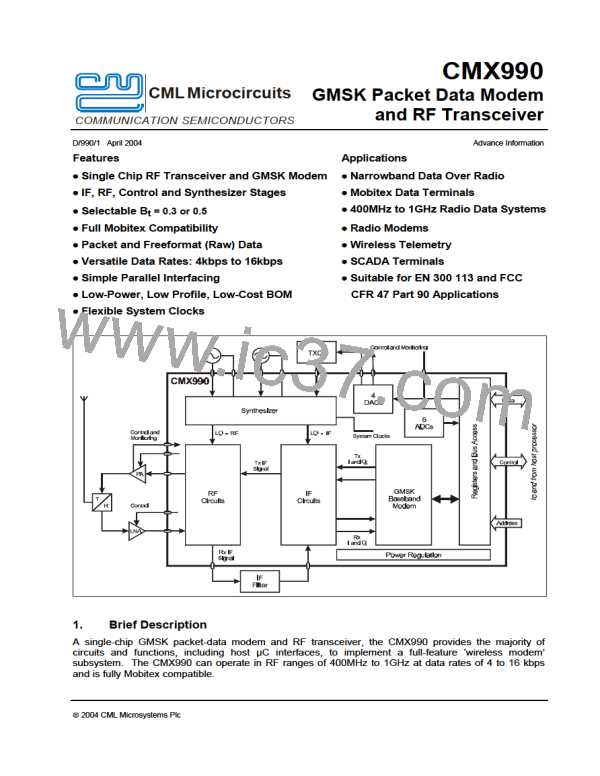GMSK Packet Data Modem and RF Transceiver
CMX990
levels through the PA are particularly low it may be necessary to provide a small amount of bias to
increase leakage to start locking.
Consider the following requirements from Mobitex MIS19:
·
·
·
The receive to transmit time requirement is 20ms.
Frequency must be within 200Hz of the final frequency before the start of data transmission.
The carrier must “on” between 5ms and 10ms prior to the start of data.
The definition of carrier “on” is not very clear in the standard but if we assume 10ms is used for CPU
processing and PLL locking, the transmitter power ramping could start at 10ms before data. The ramp
could take 5ms to rise allowing a further 5ms for the frequency to obtain fine lock to within 200Hz. These
times should be ample.
Main PLL Program
Aux PLL Program
PLL Enable
TX Enable
OPLL Lock
PA Output Control
Figure 22 TX Timing Diagram (not to scale)
Spurious Emissions
The low level and small number of spurious emissions from the OPLL transmitter are a major advantage
of the technique. The major source of spurious signals is the power amplifier harmonics. The level of
these will be set by the selected PA and a harmonic filter must be provided to remove these. The only
significant spurious signals generated by the OPLL transmitter is LO leakage from the offset mixer to the
RF input port. The CMX990 mixer has been designed to have low local oscillator leakage meeting the
typical requirements (e.g. -36dBm in Europe, -17dBm in USA).
Modulation Spectrum
The modulation of the CMX990 is produced digitally ensuring excellent accuracy and adjacent channel
characteristics. The design meets EN 300 113 requirements in Europe and 47 CFR 2.1049 & 90.210 (J)
applicable in the USA (Figure 23).
ã 2004 CML Microsystems Plc
63
D/990/1

 CMLMICRO [ CML MICROCIRCUITS ]
CMLMICRO [ CML MICROCIRCUITS ]